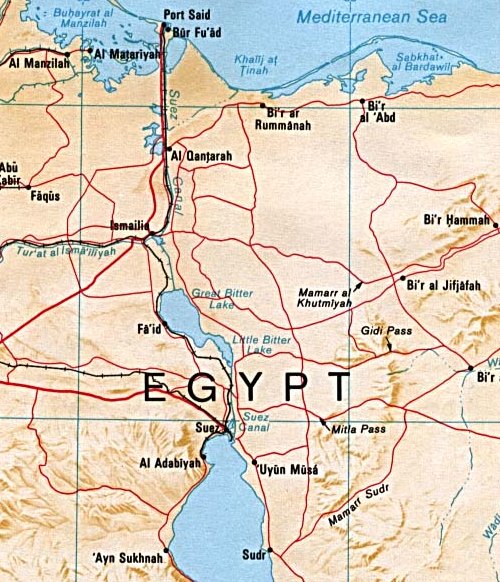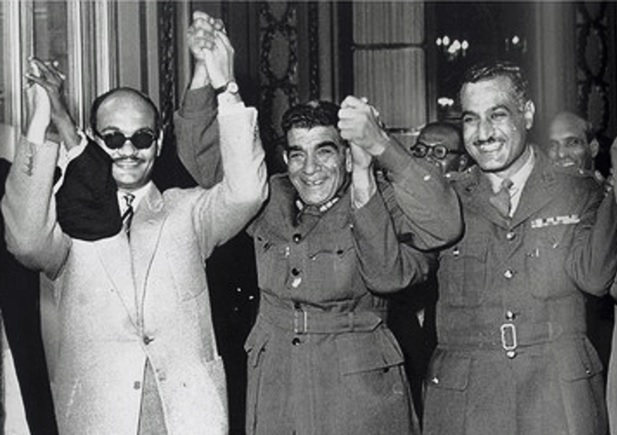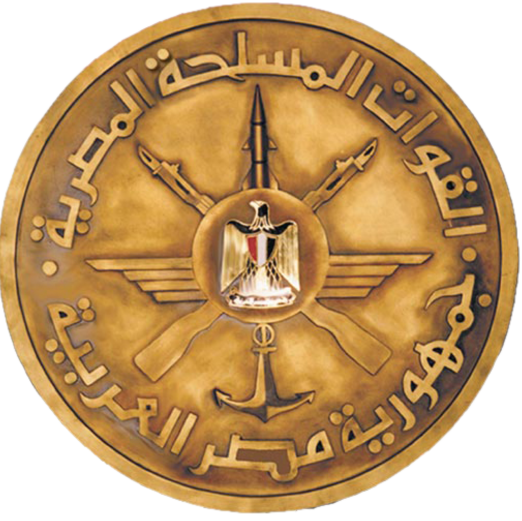|
El Matareya
El Matareya (also spelled Matarieh or la Matarée) ( ar, المطرية ). Is a coastal town, is a region ('' markaz'') in Egypt. Located in the Dakahlia Governorate, it is located south of Port Said, nicknamed the fishing town. It lies on the Lake Manzala coast in the northeastern part of the country. The region should not be confused with the district of El Matareya in Cairo. El Matareya has a population of around 300,000 inhabitants, and consists of two main districts: El-Ghasna and El-Okbiyine. It was announced as a separate city in the 1930s, with many villages following in it. History The city consisted of two main islands named El-Ghasna and El-Okbiyine. They were distinct islands until 1903 when the government issued a decree to unite both islands under the name El Matareya city. Transportation between the two islands was via wooden boats until the waterway separating the islands was dried up. The first brick houses in the city were built in the 1750s with the ... [...More Info...] [...Related Items...] OR: [Wikipedia] [Google] [Baidu] |
Cairo Governorate
Cairo Governorate is one of the 27 governorates of Egypt. It is formed of the city of Cairo, both the national capital of Egypt and the governorate's, in addition to five satellite cities: the New Administrative Capital - set to become the seat of national government, New Cairo, Shourok, Badr, Capital Gardens, and 15th of May. These cities form almost half of the Greater Cairo metropolitan area by population. Cairo Governorate is one of the 27 governorates of Egypt. It is formed of the city of Cairo, both the national capital of Egypt and the governorate's, in addition to five satellite cities: the New Administrative Capital - set to become the seat of national government, New Cairo, Shourok, Badr, Capital Gardens, and 15th of May. These cities form almost half of the Greater Cairo metropolitan area by population. As one of three city-states in Egypt, where the Cairo governor is also the head of the city. This rightfully creates much confusion and synonymity betwee ... [...More Info...] [...Related Items...] OR: [Wikipedia] [Google] [Baidu] |
Abbas II Of Egypt
Abbas II Helmy Bey (also known as ''ʿAbbās Ḥilmī Pāshā'', ar, عباس حلمي باشا) (14 July 1874 – 19 December 1944) was the last Khedive ( Ottoman viceroy) of Egypt and Sudan, ruling from 8January 1892 to 19 December 1914. In 1914, after the Ottoman Empire joined the Central Powers in World War I, the nationalist Khedive was removed by the British, then ruling Egypt, in favour of his more pro-British uncle, Hussein Kamel, marking the ''de jure'' end of Egypt's four-century era as a province of the Ottoman Empire, which had begun in 1517. Early life Abbas II (full name: Abbas Hilmy), the great-great-grandson of Muhammad Ali, was born in Alexandria, Egypt on 14 July 1874. In 1887 he was ceremonially circumcised together with his younger brother Mohammed Ali Tewfik. The festivities lasted for three weeks and were carried out with great pomp. As a boy he visited the United Kingdom, and he had a number of British tutors in Cairo including a governess who ... [...More Info...] [...Related Items...] OR: [Wikipedia] [Google] [Baidu] |
Maghreb
The Maghreb (; ar, الْمَغْرِب, al-Maghrib, lit=the west), also known as the Arab Maghreb ( ar, المغرب العربي) and Northwest Africa, is the western part of North Africa and the Arab world. The region includes Algeria, Libya, Mauritania (also considered part of West Africa), Morocco, and Tunisia. The Maghreb also includes the disputed territory of Western Sahara (controlled mostly by Morocco and partly by the Sahrawi Arab Democratic Republic) and the Spanish cities Ceuta and Melilla.Article 143. As of 2018, the region had a population of over 100 million people. Through the 18th and 19th centuries, English sources often referred to the region as the Barbary Coast or the Barbary States, a term derived from the demonym of the Berbers. Sometimes, the region is referred to as the Land of the Atlas, referring to the Atlas Mountains, which are located within it. The Maghreb is usually defined as encompassing much of the northern part of Africa, inclu ... [...More Info...] [...Related Items...] OR: [Wikipedia] [Google] [Baidu] |
Moorish Architecture
Moorish architecture is a style within Islamic architecture which developed in the western Islamic world, including al-Andalus (on the Iberian peninsula) and what is now Morocco, Algeria, and Tunisia (part of the Maghreb). The term "Moorish" comes from the historical Western European designation of the Muslim inhabitants of these regions as "Moors". Scholarly references on Islamic architecture often refer to this architectural tradition by a more geographic designation, such as architecture of the Islamic West or architecture of the Western Islamic lands, and some references on Islamic art and architecture consider use of the term "Moorish" to be outdated or contested. This architectural style blended influences from Berber culture in North Africa, pre-Islamic Iberia (Roman, Byzantine, and Visigothic), and contemporary artistic currents in the Islamic Middle East to elaborate a unique style over centuries with recognizable features such as the horseshoe arch, '' riad'' gardens ( ... [...More Info...] [...Related Items...] OR: [Wikipedia] [Google] [Baidu] |
Mansoura
Mansoura (' , rural: ) is a city in Egypt, with a population of 960,423. It is the capital of the Dakahlia Governorate. Etymology ''Mansoura'' in Arabic means "victorious". The city is named after the El Mansoura Battle against Louis IX of France during the Seventh Crusade. History Mansoura was established in 1219 by al-Kamil of the Ayyubid dynasty upon a Phatmetic branch of the Nile on a place of several older villages like Al-Bishtamir () and Kafr al-Badamas (, from , "river,canal"). After the Egyptians defeated the Crusaders during the Seventh Crusade, it was named ''Mansoura'' (aka. "The Victorious"). In the Seventh Crusade, the Capetians were defeated and put to flight; between fifteen and thirty thousand of their men fell on the battlefield. Louis IX of France was captured in the main Battle of Fariskur, and confined in the house of Ibrahim Ibn Lokman, secretary of the sultan, and under the guard of the eunuch Sobih. The king's brother was imprisoned in the same ... [...More Info...] [...Related Items...] OR: [Wikipedia] [Google] [Baidu] |
Pyrénées-Atlantiques
Pyrénées-Atlantiques (; Gascon Occitan: ''Pirenèus Atlantics''; eu, Pirinio Atlantiarrak or ) is a department in the southwest corner of France and of the region of Nouvelle-Aquitaine. Named after the Pyrenees mountain range and the Atlantic Ocean, it covers the French Basque Country and the Béarn. Its prefecture is Pau. In 2019, it had a population of 682,621.Populations légales 2019: 64 Pyrénées-Atlantiques INSEE History Originally named Basses-Pyrénées, it is one of the first 83 created during the |
Anwar Sadat
Muhammad Anwar el-Sadat, (25 December 1918 – 6 October 1981) was an Egyptian politician and military officer who served as the third president of Egypt, from 15 October 1970 until his assassination by fundamentalist army officers on 6 October 1981. Sadat was a senior member of the Free Officers who overthrew King Farouk in the Egyptian Revolution of 1952, and a close confidant of President Gamal Abdel Nasser, under whom he served as Vice President twice and whom he succeeded as president in 1970. In 1978, Sadat and Menachem Begin, Prime Minister of Israel, signed a peace treaty in cooperation with United States President Jimmy Carter, for which they were recognized with the Nobel Peace Prize. In his eleven years as president, he changed Egypt's trajectory, departing from many of the political and economic tenets of Nasserism, re-instituting a multi-party system, and launching the Infitah economic policy. As President, he led Egypt in the Yom Kippur War of 1973 to r ... [...More Info...] [...Related Items...] OR: [Wikipedia] [Google] [Baidu] |
War Of Attrition
The War of Attrition ( ar, حرب الاستنزاف, Ḥarb al-Istinzāf; he, מלחמת ההתשה, Milhemet haHatashah) involved fighting between Israel and Egypt, Jordan, the Palestine Liberation Organisation (PLO) and their allies from 1967 to 1970. Following the 1967 Six-Day War, no serious diplomatic efforts tried to resolve the issues at the heart of the Arab–Israeli conflict. The 1967 Arab League summit formulated in September the " three no's" policy: barring peace, recognition or negotiations with Israel. The Egyptian President Gamal Abdel Nasser believed that only military initiative would compel Israel or the international community to facilitate a full Israeli withdrawal from Sinai, and hostilities soon resumed along the Suez Canal. These initially took the form of limited artillery duels and small-scale incursions into Sinai, but by 1969, the Egyptian Army judged itself prepared for larger-scale operations. On March 8, 1969, Nasser proclaimed the offi ... [...More Info...] [...Related Items...] OR: [Wikipedia] [Google] [Baidu] |
Salah Salem
Salah Salem ( ar, صلاح سالم) (September 25, 1920 – February 18, 1962) was an Egyptian military officer, and politician, and a member of the Free Officers Movement that orchestrated the Egyptian Revolution of 1952. Education and military career Salem was born in 1920 to an Egyptian family in Sinkat, Sudan, which was united with Egypt at the time. He was raised in the Hilmiyyat Gadida neighborhood of Cairo, where he was educated at the Ibrahimiyyeh School. In 1938, he graduated from the Royal Military Academy of Egypt and Sudan. He, along with four other future members of the Free Officers, was ranked in the top 10 percent of his classes at the General Staff College by 1947. He graduated from college in 1948. That same year, Salem served in the Egyptian and Sudanese army in the Palestine War as an infantry officer.All ... [...More Info...] [...Related Items...] OR: [Wikipedia] [Google] [Baidu] |
Abdel Hakim Amer
Mohamed Abdel Hakim Amer ( arz, محمد عبد الحكيم عامر, ; 11 December 1919 – 13 September 1967) was an Egyptian military officer and politician. Amer served in the 1948 Arab–Israeli War, and played a leading role in the military coup that overthrew King Farouk in 1952. After leading Egyptian forces in the 1956 Suez war, he was appointed Minister for Defense by President Gamal Abdel Nasser and was Egyptian Vice President between 1958 to 1965. Early life and education Amer was born in Samalut, in the El Minya on 11 December 1919. He was from an affluent family, and his father was a land owner and village mayor. His uncle served as the minister of war during the reign of King Farouk. After finishing school, Amer attended the Egyptian Military Academy and graduated in 1938. He was commissioned into the Egyptian Army in 1939. Military career Amer served in the 1948 Arab–Israeli War, took part in the 1952 Revolution and commanded the Egyptian Army ... [...More Info...] [...Related Items...] OR: [Wikipedia] [Google] [Baidu] |
Gamal Abdel Nasser
Gamal Abdel Nasser Hussein, . (15 January 1918 – 28 September 1970) was an Egyptian politician who served as the second president of Egypt from 1954 until his death in 1970. Nasser led the Egyptian revolution of 1952 and introduced far-reaching land reforms the following year. Following a 1954 attempt on his life by a Muslim Brotherhood member, he cracked down on the organization, put President Mohamed Naguib under house arrest and assumed executive office. He was formally elected president in June 1956. Nasser's popularity in Egypt and the Arab world skyrocketed after his nationalization of the Suez Canal Company and his political victory in the subsequent Suez Crisis, known in Egypt as the ''Tripartite Aggression''. Calls for pan-Arab unity under his leadership increased, culminating with the formation of the United Arab Republic with Syria from 1958 to 1961. In 1962, Nasser began a series of major socialist measures and modernization reforms in Egypt. Despite ... [...More Info...] [...Related Items...] OR: [Wikipedia] [Google] [Baidu] |
Tripartite Aggression
The Suez Crisis, or the Second Arab–Israeli war, also called the Tripartite Aggression ( ar, العدوان الثلاثي, Al-ʿUdwān aṯ-Ṯulāṯiyy) in the Arab world and the Sinai War in Israel,Also known as the Suez War or 1956 War; other names include the ''Sinai war'', ''Suez–Sinai war'', ''1956 Arab–Israeli war'', the Second Arab–Israeli war, ''Suez Campaign'', ''Sinai Campaign'', ''Kadesh Operation'' and ''Operation Musketeer'' was an invasion of Egypt in late 1956 by Israel, followed by the United Kingdom and France. The aims were to regain control of the Suez Canal for the Western powers and to remove Egyptian president Gamal Abdel Nasser, who had just swiftly nationalised the foreign-owned Suez Canal Company, which administered the canal. Israel's primary objective was to re-open the blocked Straits of Tiran. After the fighting had started, political pressure from the United States, the Soviet Union and the United Nations led to a withdrawal by the ... [...More Info...] [...Related Items...] OR: [Wikipedia] [Google] [Baidu] |






